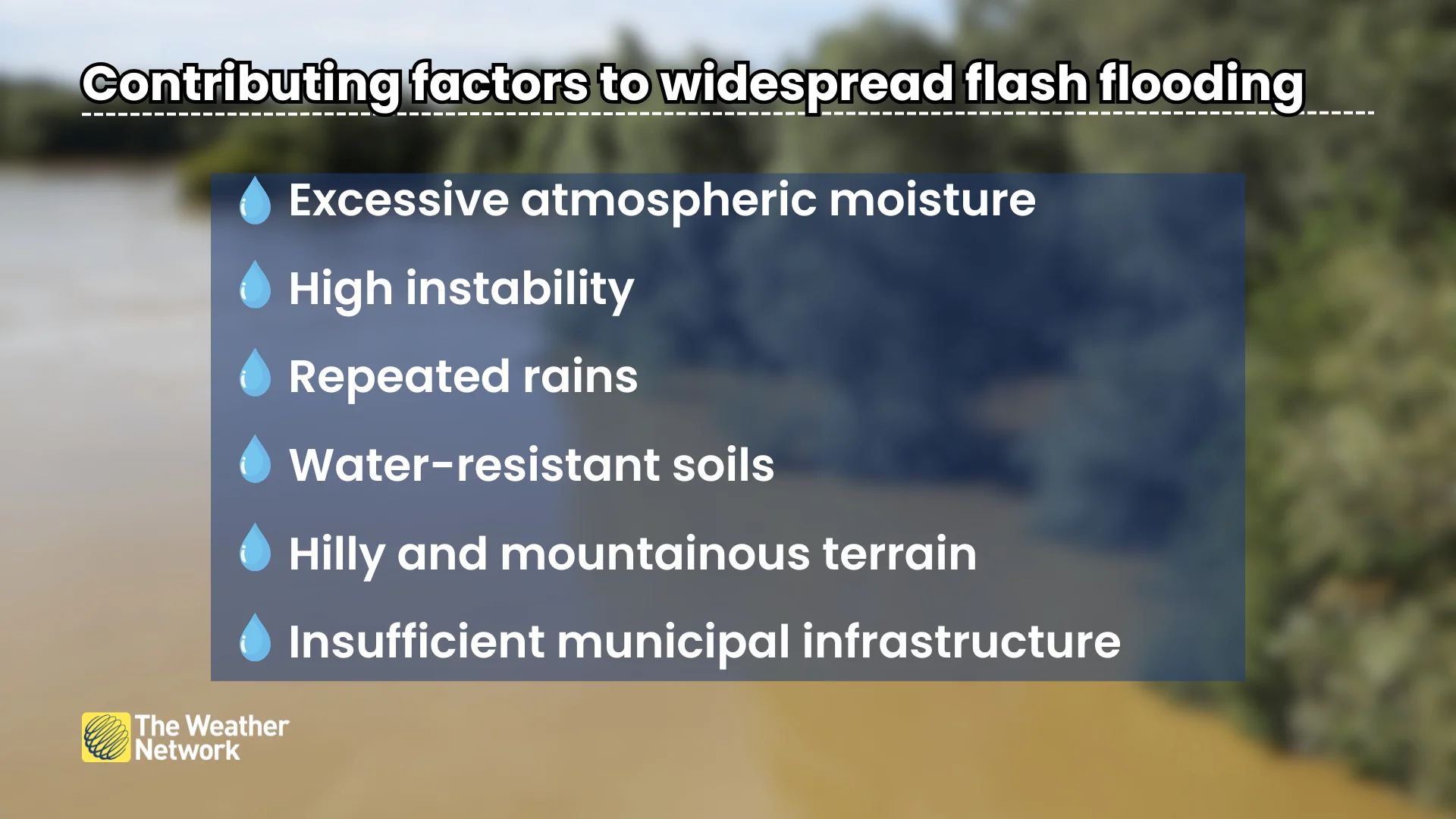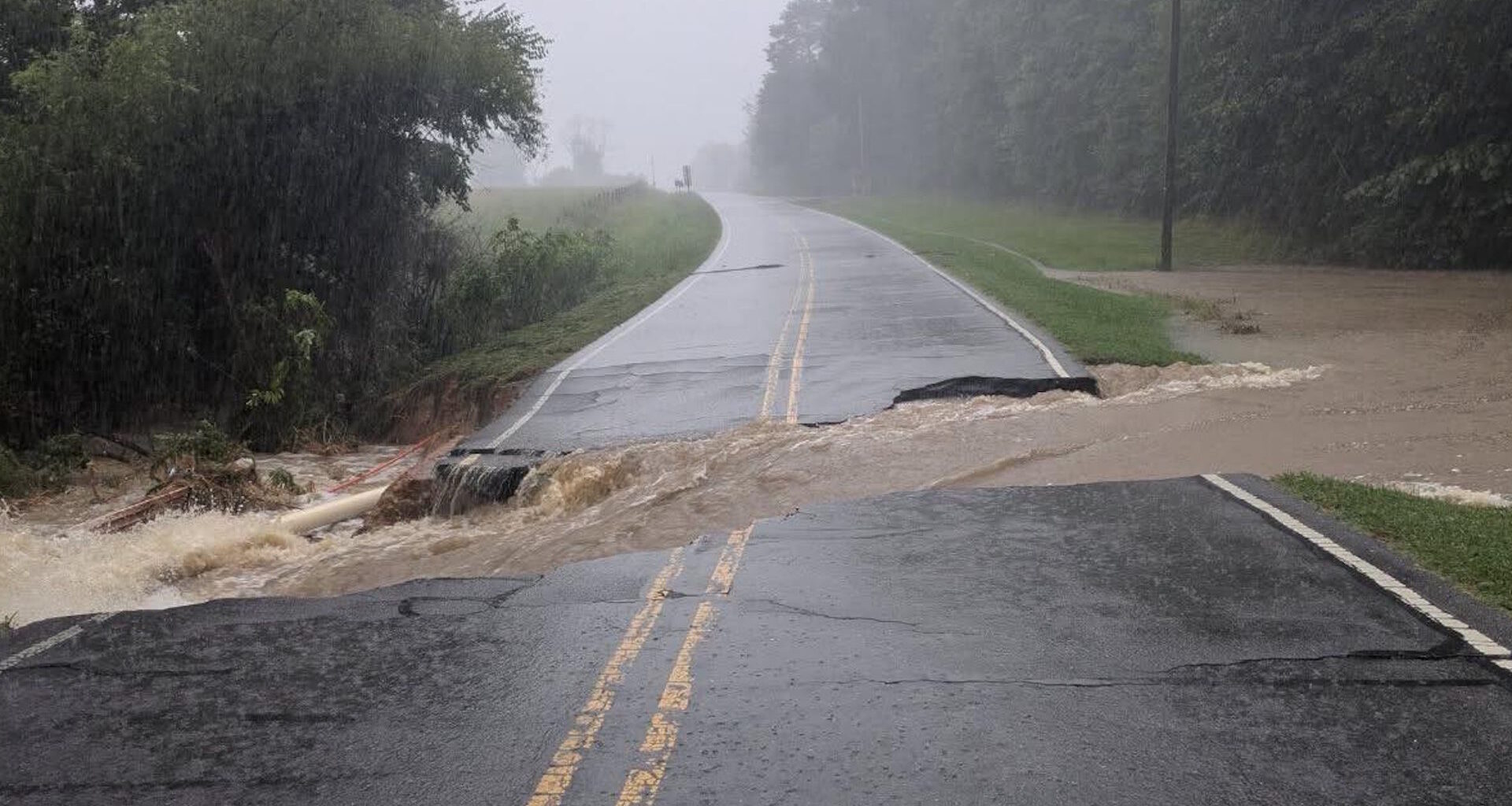A substantial thunderstorm that moved over New York City on July 14 dumped more than 50 mm of rain on Central Park over the course of one hour, marking the second-highest one-hour total ever observed at the location, where weather records stretch back to the late 1800s.
The causes of flash flooding are diverse and complex
Heavy rain is the common thread that ultimately causes waters to rise. But not every downpour leads to chaos. What’s so different about the setup this year?

RELATED: ‘Feel’ miserable out? How our bodies react when humidex values soar
Excess moisture is the most immediate cause. It’s no secret that it’s been a very humid summer—even on the Canadian side of the border. The wealth of humidity in the atmosphere has fuelled unusually robust downpours across the U.S. High instability, rich humidity, and generally favourable overall conditions are ripe for thunderstorms with torrential rains.
These intense rainfall rates can easily overwhelm storm sewers like those in New York City, causing surreal scenes like subways filling with water. This is a problem that will only get worse as we experience climate change.
Repeated rains are no help. One heavy rainstorm after another takes a significant toll on a community’s ability to handle runoff.
Saturated soils struggle to absorb additional rainfall. Swollen waterways can only handle so much runoff before they spill their banks. Many of the areas hit by flooding this year saw one downpour after another in quick succession.

